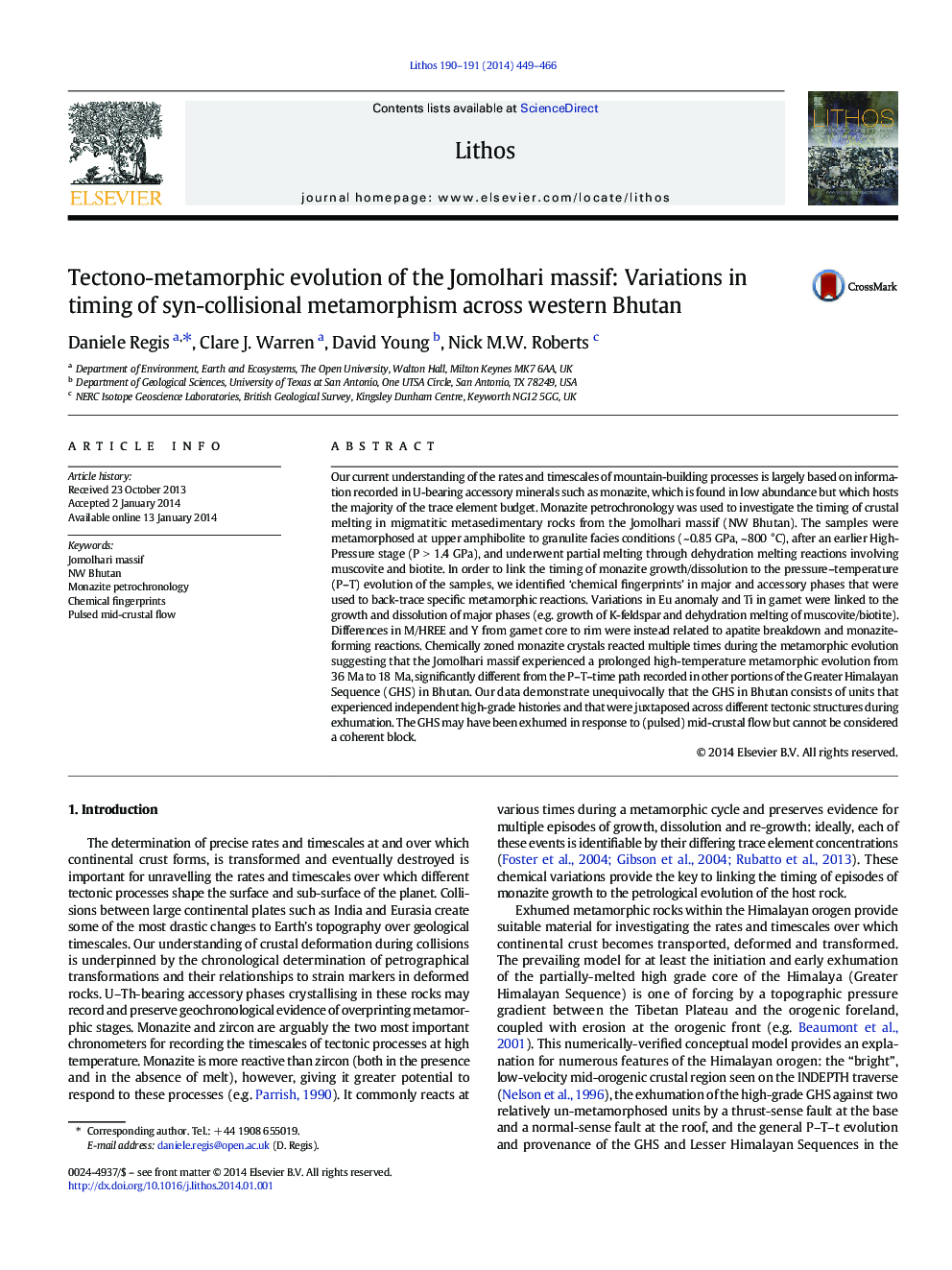| کد مقاله | کد نشریه | سال انتشار | مقاله انگلیسی | نسخه تمام متن |
|---|---|---|---|---|
| 4716029 | 1638680 | 2014 | 18 صفحه PDF | دانلود رایگان |
• The Jomolhari Massif experienced prolonged HT metamorphic evolution.
• Monazite-forming reaction “fingerprints” can be identified in peritectic garnet.
• “Fingerprints” in major and accessory phases can be linked to the PT evolution.
• GHS in Bhutan consists of units that experienced independent high-grade histories.
Our current understanding of the rates and timescales of mountain-building processes is largely based on information recorded in U-bearing accessory minerals such as monazite, which is found in low abundance but which hosts the majority of the trace element budget. Monazite petrochronology was used to investigate the timing of crustal melting in migmatitic metasedimentary rocks from the Jomolhari massif (NW Bhutan). The samples were metamorphosed at upper amphibolite to granulite facies conditions (~ 0.85 GPa, ~ 800 °C), after an earlier High-Pressure stage (P > 1.4 GPa), and underwent partial melting through dehydration melting reactions involving muscovite and biotite. In order to link the timing of monazite growth/dissolution to the pressure–temperature (P–T) evolution of the samples, we identified ‘chemical fingerprints’ in major and accessory phases that were used to back-trace specific metamorphic reactions. Variations in Eu anomaly and Ti in garnet were linked to the growth and dissolution of major phases (e.g. growth of K-feldspar and dehydration melting of muscovite/biotite). Differences in M/HREE and Y from garnet core to rim were instead related to apatite breakdown and monazite-forming reactions. Chemically zoned monazite crystals reacted multiple times during the metamorphic evolution suggesting that the Jomolhari massif experienced a prolonged high-temperature metamorphic evolution from 36 Ma to 18 Ma, significantly different from the P–T–time path recorded in other portions of the Greater Himalayan Sequence (GHS) in Bhutan. Our data demonstrate unequivocally that the GHS in Bhutan consists of units that experienced independent high-grade histories and that were juxtaposed across different tectonic structures during exhumation. The GHS may have been exhumed in response to (pulsed) mid-crustal flow but cannot be considered a coherent block.
Journal: Lithos - Volumes 190–191, March 2014, Pages 449–466
